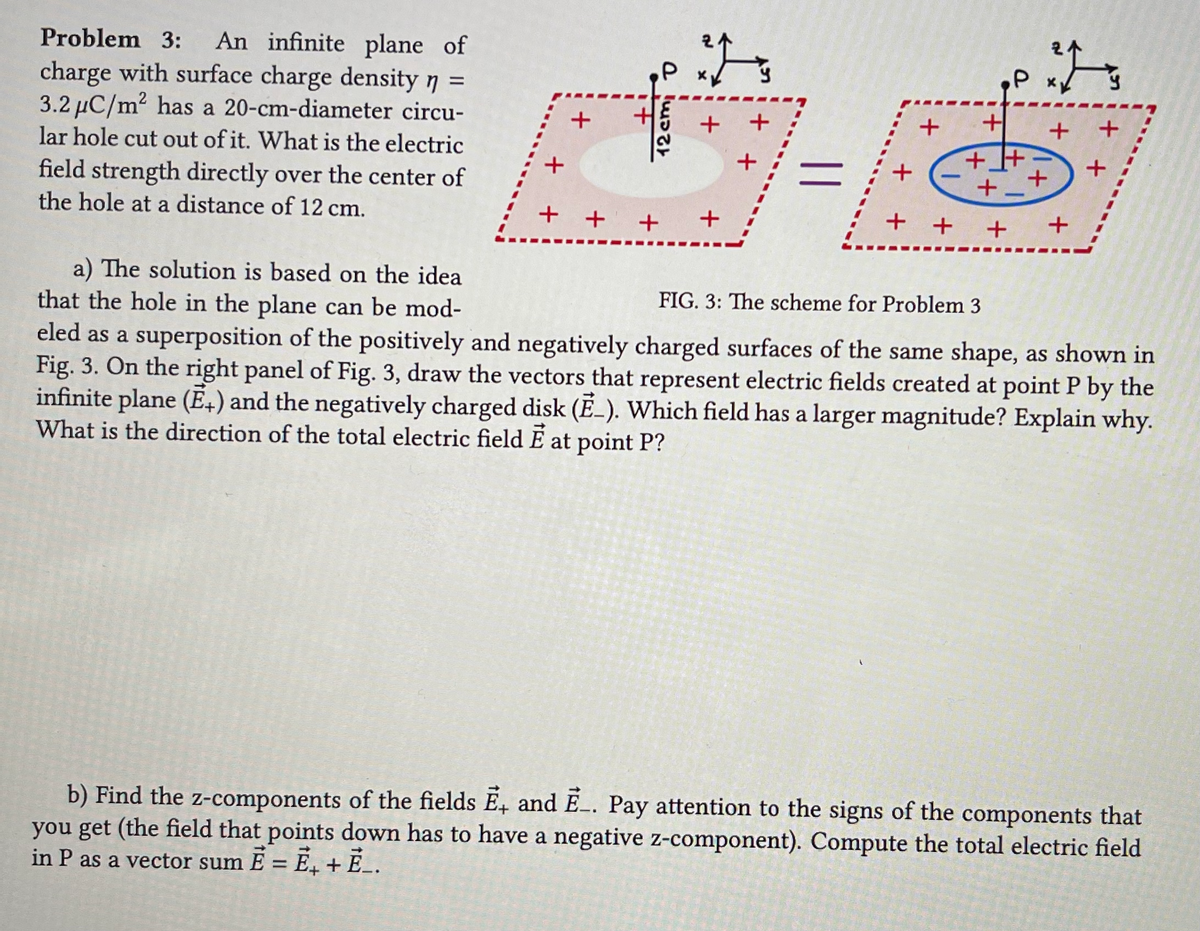Problem 3: An infinite plane of charge with surface charge density n = 3.2 μC/m² has a 20-cm-diameter circu- lar hole cut out of it. What is the electric field strength directly over the center of the hole at a distance of 12 cm.
Problem 3: An infinite plane of charge with surface charge density n = 3.2 μC/m² has a 20-cm-diameter circu- lar hole cut out of it. What is the electric field strength directly over the center of the hole at a distance of 12 cm.
Related questions
Question
I need help with this problem, my professor won't help me and I need help. Can you help me with A and B and can you label which one is A and B

Transcribed Image Text:Problem 3: An infinite plane of
charge with surface charge density ŋ =
3.2 μC/m² has a 20-cm-diameter circu-
lar hole cut out of it. What is the electric
field strength directly over the center of
the hole at a distance of 12 cm.
+
+
+ + +
12 cm D
275
+
+
+
=
+
+
+ +
+
+
P
225
-
+
+
+
+ +
++
FIG. 3: The scheme for Problem 3
a) The solution is based on the idea
that the hole in the plane can be mod-
eled as a superposition of the positively and negatively charged surfaces of the same shape, as shown in
Fig. 3. On the right panel of Fig. 3, draw the vectors that represent electric fields created at point P by the
infinite plane (E+) and the negatively charged disk (E-). Which field has a larger magnitude? Explain why.
What is the direction of the total electric field E at point P?
b) Find the z-components of the fields E and E. Pay attention to the signs of the components that
you get (the field that points down has to have a negative z-component). Compute the total electric field
in P as a vector sum E = E + E.
Expert Solution
This question has been solved!
Explore an expertly crafted, step-by-step solution for a thorough understanding of key concepts.
Step by step
Solved in 2 steps with 1 images
